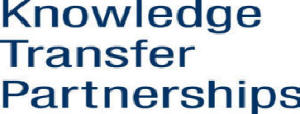
OASE:
Optical Access Seamless
Evolution
Consequently, an important strategic aspect is the need for a thorough
techno-economic analysis underpinning the development of NG-OA architectures
that feature a minimised total cost of ownership (TCO). New approaches and
methodologies to analyse TCO will therefore be required to provide the necessary
business case data underlying the multiple commercial opportunities arising from
such a regulated, yet competitive market environment. Network energy efficiency
issues are also becoming an increasingly crucial aspect due to economic and
environmental pressures.
The evolution towards an"open access network" environment in which multiple
market players will have to cooperate at various levels will require reliable,
"zero-touch", automated management and open interfacing, clear service
definitions and low operational complexity. The use of optical technologies as
well as network consolidation (reduction of sites and active nodes) to reduce
network costs will have to be consistent with the open access network model.
Focused on European requirements, OASE (Optical Access Seamless Evolution) will
address these challenges to develop an optimised multi-terabit NG-OA
architecture that will span at least 100km and serve Gbit/s services to a
minimum of 1000 customers.
In contrast to other approaches, OASE will be unique in developing the future
NG-OA architecture from a multi-faceted perspective. This shall not only include
the technology point of view, but also encompass the economic, regulatory,
environmental and complex business models associated with such open access
network architectures.

FIVER: Fully-converged quintuple-play integrated optical-wireless access architectures
FIVER project proposes and develops a novel integrated
access network architecture employing only OFDM signals for the provision of
quintuple play services (Internet, phone/voice, HDTV, wireless -WiMAX, UWB and
LTE femtocell- and home security/control). FIVER architecture is completely
integrated: The optical access FTTH, the in-home optical distribution network
and the final radio link become part of the access network. This permits a
streamlined network architecture avoiding most of the conversion stages and
proving cost, space and energy savings.
FIVER is a fully OFDM based network. This permits cost effective, fully
centralised network architecture where the transmission impairment (both optical
and radio) compensation and network management is done in only at the Central
Office. No further compensation, regeneration or format conversion is required
along the network giving a stream-lined network architecture capable of handling
future services of interest.
FIVER services are fully converged: Both baseband (Gigabit-Ethernet provision)
and standard wireless (WiMAX, UWB and LTE) radio-over-fibre signals are
transmitted in radio-over-fibre through the FTTH, the in-building optical
infrastructure and also the final user radio link. The use of full-standard
wireless signals for optical and radio transmission gives two advantages: Fully
standard receiver equipment can be used by the customer, and no ad hoc
detection, re modulation or frequency conversion is required. All the
transmission compensation algorithms, electro optical subsystems and network
management are developed by FIVER consortium.
FIVER architecture is future-proof. The project demonstrates HDTV service
provision in the 60 GHz radio band at the last stage. Other wireless services
operation in other bands can be included in the FIVER network architecture as
long as they are OFDM.-based. This is due to the powerful transmission
impairment compensation algorithms developed in the project.

STRONGEST: Scalable, Tuneable and Resilient Optical Networks Guaranteeing Extremely-high Speed Transport
Internet traffic has been growing quickly for many years, despite adverse
economic conditions and this growth will continue in the future. To cope with
this evolution, the cost of today s network solutions is still too high. In
addition, in line with the EC goal of reducing the overall emissions, energy
efficiency should be widely improved, using whenever possible optics instead of
electronics where only transport is required.
Moreover, due to the unpredictable traffic increase, flexible bandwidth
management has to be used instead of fixed allocated bandwidth. For these
reasons, the key requirements of innovative ultra-high bandwidth networks refer
to scalability, flexibility, assurance of end-to-end quality of service and
energy efficiency, beside reduction of total cost of ownership. In the data
plane, current equipment and network architectures still provide limited
scalability, are not cost-effective and do not properly guarantee end-to-end
quality of service. In the control plane, the open issue is to define an
end-to-end control structure that allows different technologies and domains to
inter-work efficiently, incorporating virtualization of network resources. Based
on these rationales, STRONGEST s main objective is: To design and demonstrate an
evolutionary ultra-high capacity multilayer transport network, compatible with
Gbit/s access rates, based on optimized integration of Optical and Packet nodes,
and equipped with a multi-domain, multi-technology control plane.
This network will offer: High scalability and flexibility Guaranteed end-to-end
performance and survivability Increased energy efficiency Reduced total cost of
ownership Feasibility studies and experimental implementation and demonstration
of prototypes will be key activities, as well. STRONGEST will also feed the
collaboration with other Projects and the submission of specific contributions
to ITU-T, OIF, IETF, thus reinforcing European position in standardization
bodies.

KTP: Knowledge Transfer Partnership
University of Essex. All Rights Reserved. Copyright 2012 ©

